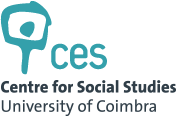Theses defended
Life within architecture from design process to space use. Adaptability in school buildings today - A methodological approach
February 27, 2018
Mário Krüger
e
Teresa Heitor
Acknowledging school space as an enabler of the teaching and learning process, this research proposes to problematise the relevance of space use in the learning environments as a variable to be introduced in the design and spatial adaptability as a possibility of enhancing that use.
Adaptability copes with the changes brought by the rapid developments from the pedagogical practices, the curricular options and the information technology, enabling a more lived educational space, which allocates more diverse activities and users, within a longer lifecycle.
Despite having been previously studied, namely in the 1970s, adaptability in school buildings today translates itself onto the current spatial and technical requirements guided by the contemporary pedagogical practices and a more independent and creative student profile. Therefore, this research intends to identify how the concept of adaptability in the 21st century secondary schools is understood and configured and to define a methodology able to observe and describe the condition of adaptability within this context.
The original methodological approach presented aims to assess the schools' ability to cope with the pedagogical and social evolving needs and to conclude on the design attributes that potentially enhance adaptability, for a more lasting and effective building performance. It systematically introduces procedures from different epistemological provinces, providing a more extensive analysis on the building's description for a more supported retrieval of its adaptability potential, sequentially as: description of the spatial sample, functional and morphological, informing on how it supports activity allocation; description of all possible activity allocations, informing on the pedagogical potential of each educational environment; description of effective events, informing on actual behaviour and spatial appropriation on the school; and description of the potential correlations amongst each stage and transversally on all these variables. This last milestone enables the retrieval of the school's adaptability.
As a case study this research assesses space use in a Portuguese contemporary artistic school, as a hub for a broader school community and a wider range of uses, amongst which the defined methodology will be tested and calibrated.
Finally, the milestones of the proposed methodology are assessed and their results correlated, in order to understand potential similarities and variances that might be specific of its application onto the case study, or that might imply more general correlations between spatial morphology, entropy and effective spatial fruition. Conclusions also lie on their respective implications towards adaptability, acknowledging them both in the design and during the school's fruition and recognising potential pedagogical, social and cultural changes that might convey life and learning within a school environment.
KEYWORDS: Adaptability; Methodology; School building; Design process; Space use
Public Defence date
Supervision
Abstract
Adaptability copes with the changes brought by the rapid developments from the pedagogical practices, the curricular options and the information technology, enabling a more lived educational space, which allocates more diverse activities and users, within a longer lifecycle.
Despite having been previously studied, namely in the 1970s, adaptability in school buildings today translates itself onto the current spatial and technical requirements guided by the contemporary pedagogical practices and a more independent and creative student profile. Therefore, this research intends to identify how the concept of adaptability in the 21st century secondary schools is understood and configured and to define a methodology able to observe and describe the condition of adaptability within this context.
The original methodological approach presented aims to assess the schools' ability to cope with the pedagogical and social evolving needs and to conclude on the design attributes that potentially enhance adaptability, for a more lasting and effective building performance. It systematically introduces procedures from different epistemological provinces, providing a more extensive analysis on the building's description for a more supported retrieval of its adaptability potential, sequentially as: description of the spatial sample, functional and morphological, informing on how it supports activity allocation; description of all possible activity allocations, informing on the pedagogical potential of each educational environment; description of effective events, informing on actual behaviour and spatial appropriation on the school; and description of the potential correlations amongst each stage and transversally on all these variables. This last milestone enables the retrieval of the school's adaptability.
As a case study this research assesses space use in a Portuguese contemporary artistic school, as a hub for a broader school community and a wider range of uses, amongst which the defined methodology will be tested and calibrated.
Finally, the milestones of the proposed methodology are assessed and their results correlated, in order to understand potential similarities and variances that might be specific of its application onto the case study, or that might imply more general correlations between spatial morphology, entropy and effective spatial fruition. Conclusions also lie on their respective implications towards adaptability, acknowledging them both in the design and during the school's fruition and recognising potential pedagogical, social and cultural changes that might convey life and learning within a school environment.
KEYWORDS: Adaptability; Methodology; School building; Design process; Space use

